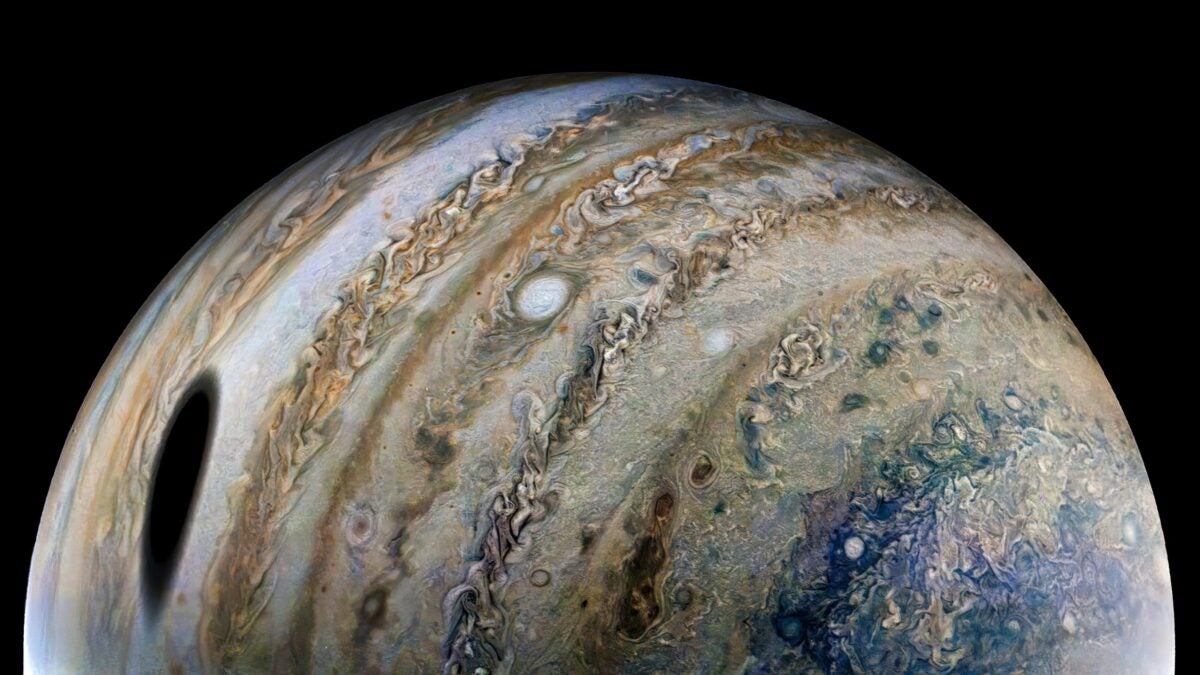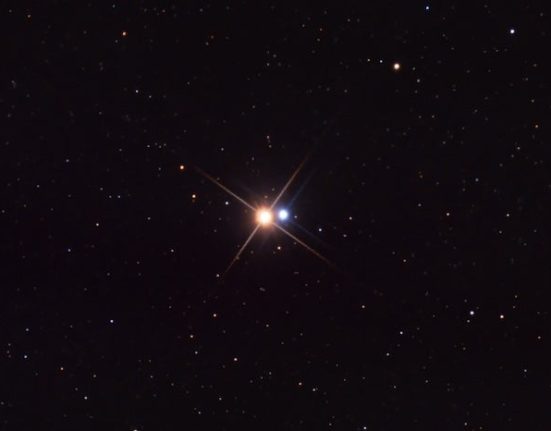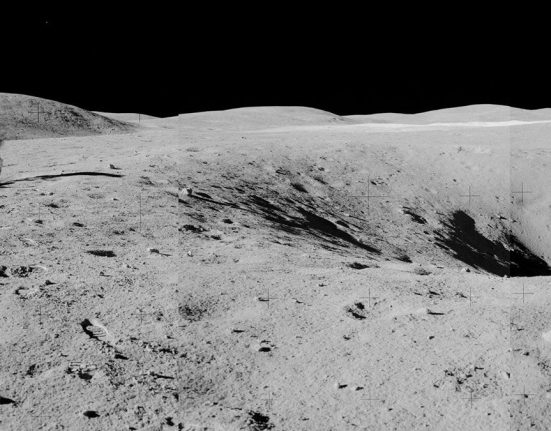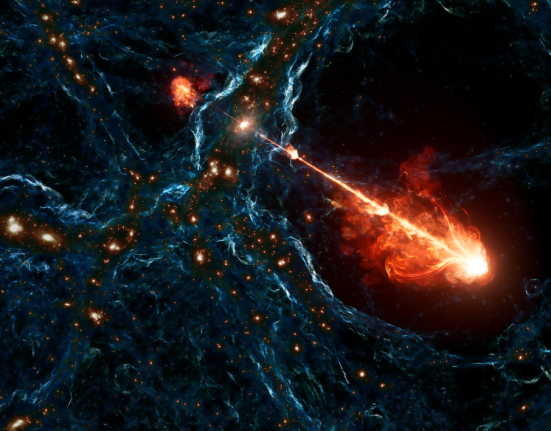
An image of Jupiter captured by NASA's Juno spacecraft. Credit: NASA/JPL-Caltech/SwRI/MSSS
Last week, a European space probe sped past Earth and the Moon. In the early 2030s, Jupiter Icy Moons Explorer (JUICE) Mission It will be the first European probe to orbit Jupiter, but first it had to perform a key manoeuvre to facilitate its eventual encounter with the giant planet.
JUICE passed close to the Moon at 22:16 BST on 19 August. It then passed close to Earth on 20 August at 22:57 BST.
It's been 16 months since JUICE was launched from The European spaceport in French GuianaIts flyby of Earth and the Moon made JUICE the first spacecraft to attempt a Earth-Moon Gravity Assist, or LEGA.
During the ambitious sequence of maneuvers, JUICE took advantage of the gravitational pull of both Earth and the Moon to alter its trajectory and emerge at the end of the sequence on a new course that will set up a third planetary encounter with Venus in August 2025.
At Venus, JUICE will perform a slingshot maneuver back to Earth (twice) and finally to Jupiter, where it will enter orbit in July 2031 to begin a three-and-a-half-year mission to explore the giant planet's icy moons. Ganymede, Calistoand Europe – together with the volcanic satellite Io, are known as the Galilean moons, named after the Italian astronomer Galileo Galilei.
This scenic route offers unique opportunities to observe distant worlds up close, as well as calibrate instruments that will map Jupiter's environment and study the three moons whose subsurface oceans scientists believe could harbor alien life. Measurements indicate that Ganymede, Europa and Callisto all have liquid water beneath their outer layers, and scientists believe alien life may have developed there.
Pragmatic decision
The first LEGA maneuver is the only way the spacecraft will be able to carry its 617 pounds (280 kilograms) of scientific instruments to Jupiter with enough fuel to enter orbit around the planet and execute its exciting mission.
The fuel savings are so great that gravity assist maneuvers They have been used since the dawn of space exploration, enabling missions such as Voyager 1 and 2. These spacecraft were launched in 1977 to study the outer planets, but have since travelled into interstellar space – the space between individual stars. These spacecraft are now the furthest man-made objects from Earth and have completely revolutionised our understanding of the solar system.
What makes LEGA on August 19-20 so special is that never before has there been a need to deploy two gravity assists in the short span of a single day.
But on August 19, the Moon was in the perfect place to alter JUICE's trajectory in such a way that its subsequent pass by Earth would be as efficient as possible in catapulting the spacecraft toward Venus.
This has the advantage of ultimately reducing the total time the spacecraft would need to reach Jupiter (no less than eight years). However, it also entails more stringent operational and trajectory requirements that will test the most skilled and experienced mission operators on Earth.
Flying past a planet or moon is no easy task. Mission designers and spacecraft operators must meticulously plan the time, distance, and direction of flight for each planetary encounter. The spacecraft must follow each of these instructions in a precise and timely manner.
This is complicated by limited knowledge of a spacecraft's position and velocity in three-dimensional space (typically accurate to within a few miles and a few inches per second, respectively), as well as sophisticated, if imperfect, models of the space environment that hamper our ability to accurately predict a spacecraft's orbit beyond a few days.

But if deviations from the nominal flight path are found to be too large, the spacecraft's engines are activated to reduce the error as much as possible. If you make a mistake or let the error grow too large, your mission can be lost in space.
The margin for error is even smaller when two planetary objects are flown by in rapid succession, as JUICE did. With less than 24 hours between the Moon and Earth flybys, there was very little time to react to problems. That's why European Space Agency (ESA) mission planners have a Network of ground stations around the world which use giant telecommunications satellite dishes to communicate with spacecraft. They constantly monitored, measured, calculated and corrected the trajectory as much as they could during the two days before and after the close encounters.
During this period, international teams of spacecraft operators worked around the clock to analyze data transmitted by the spacecraft and keep it on course with minor adjustments.
There are ten scientific instruments on board the spacecraft, along with navigation equipment, that collected data during close encounters of the Earth and Moon to verify that the trajectory was on the right track.
JUICE data will reach Earth through two antennas of different sizes on the spacecraft, but JUICE will need to be pointed very precisely at Earth to deliver vital science and navigation data.
The maneuvers allowed Juice to rendezvous with Jupiter in 2031 and begin its exploration mission. There is the exciting prospect of observing icy moons that are considered some of the most promising places in the solar system to explore. search for extraterrestrial lifeThis could shed more light on conditions beneath the outer ice sheet and how hospitable they might be to living organisms.
The spacecraft will also collect data on Jupiter itself, which is the largest planet in the solar system and holds many secrets yet to be revealed. The results from the flyby of Earth and the Moon, which took place on August 19 and 20, were enormous and marked a new frontier in the exploration of planets and their moons.
This article is republished from The conversation under a Creative Commons license. Read the Original article.











Leave feedback about this